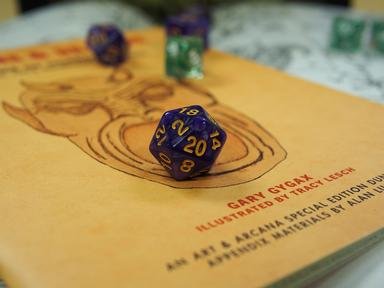Quiz Answer Key and Fun Facts
1. Please note that there were two editions of the Dungeons & Dragons Expert Rules Set, both of which are for characters from levels 4-14. All the questions in this quiz specifically refer to the 1983 edition, and not to the earlier edition by Dave Cook (1981) (although the rules are largely similar anyway).
The Expert Set rules go into some detail about the requirements for building a stronghold that apply to each character class. A fighter can only build a stronghold when they reach Name (9th) level.
2. The Expert Set rules provide details about how to use horses in campaigns. In particular, they explain the war horse, that is, a horse that is trained for use in combat. Which character class is NOT permitted to use a war horse?
3. The Expert Set rules explain how to run town and wilderness adventures and give examples of settlements in the Known World setting. What is the name of the settlement, located by a lake, that is suggested for use as the adventurers' home town?
4. At high levels, clerics gain some very powerful spells including the ability to raise the dead. A 10th level cleric would be able to use the raise dead spell on someone who had been dead for up to what maximum period?
5. The Dungeon Master's Section of the Dungeons & Dragons Expert rules booklet includes a list of monsters not described in the Basic rules set. Of the various kinds of undead monsters that have appeared in Dungeons & Dragons, which is the most powerful that is specifically described in the Expert Set Rulebook?
6. In the Expert rules set, thieves gain what useful ability when they reach 4th level?
7. The Expert Set Rulebook provides rules for characters hiring mercenaries. In addition to human and demi-human hirelings, members of which monster race may also be hired according to these rules?
8. The Dungeon Master's Section of the Expert Set Rulebook provides new rules for magic items, including special swords that are created by powerful beings for a specific purpose. Several examples of special swords are given. Based on these, what effect could occur if a character uses a Chaotic sword to strike a Lawful character?
9. If an elf character of sufficiently high level were to build a stronghold, in which setting would it usually be located?
10. In addition to the Rulebook, the Dungeons & Dragons Expert Set included a game module designed to introduce player characters to wilderness adventures, which are the theme of this set. What is the module called?
Source: Author
agentofchaos
This quiz was reviewed by FunTrivia editor
WesleyCrusher before going online.
Any errors found in FunTrivia content are routinely corrected through our feedback system.
